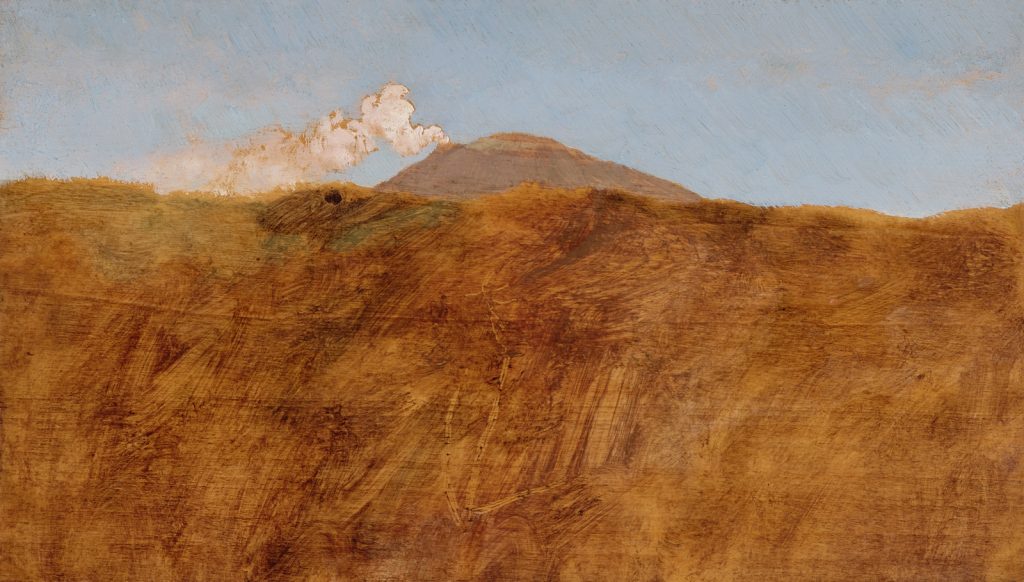Giuseppe De Nittis (Barletta 1846 - 1884 St.-Germain-en-Laye)
Paesaggio Vesuviano [Vesuvian Landscape], 1871-2
Oil on panel, 18.5 x 31.7 cm
Provenance:
Jean Dieterle, Paris
Thence by descent in the Dieterle family
Literature:
Mary Pittaluga and Enrico Piceni, De Nittis, Milan 1963, no. 37
Piero Dini and Giuseppe Luigi Marini, De Nittis. La vita, i documenti, le opere dipinte, catalogue raisonné, Turin 1990, I, p. 392, no. 427; II, repr.
We are grateful to Professor Christine Farese Sperken for examining the work.
She has confirmed its authenticity.
Please view the publication on "Giuseppe De Nittis - My Italy" as pdf.
Vesuvius was the first subject to attract his interest. The volcano was the main focus of his work and provided a source of constantly changing motifs for a twelve-month period between 1871 and 1872. He made laborious daily ascents and descents on horseback, filling a diary with a day-to-day record of his impressions. The diary – his taccuino[1] – is an animated and entertaining account of his experiences. It reveals his fascination for shifting perspectival effects and the effects of changes in weather and light conditions. He was to produce some seventy studies unmatched in Italian painting of the period. They can be seen as genuine precursors of late Impressionism.[2]
The first of the oil studies presented here, titled Paesaggio Vesuviano [Vesuvian Landscape] with its benign, rather than threatening, volcanic plume, is certainly datable to 1871-2. In terms of handling, it is a fine and characteristic example of the work De Nittis produced in this twelve-month period of intense artistic experimentation. The modeling of the foreground in broad strokes of rapidly applied, free-flowing paint is also entirely characteristic of his style.
[1] See Enzo Mazzoccoli and Nelly Rettmeyer (eds.), Giuseppe De Nittis, Taccuino 1870-1884, Bari 1964. [2] See Christine Farese Sperken, ‘Alle Falde del Vesuvio’, in De Nittis. Impressionista italiano, exhib. cat., Rome, Chiostro del Bramante, Milan 2004, pp. 33-8.

